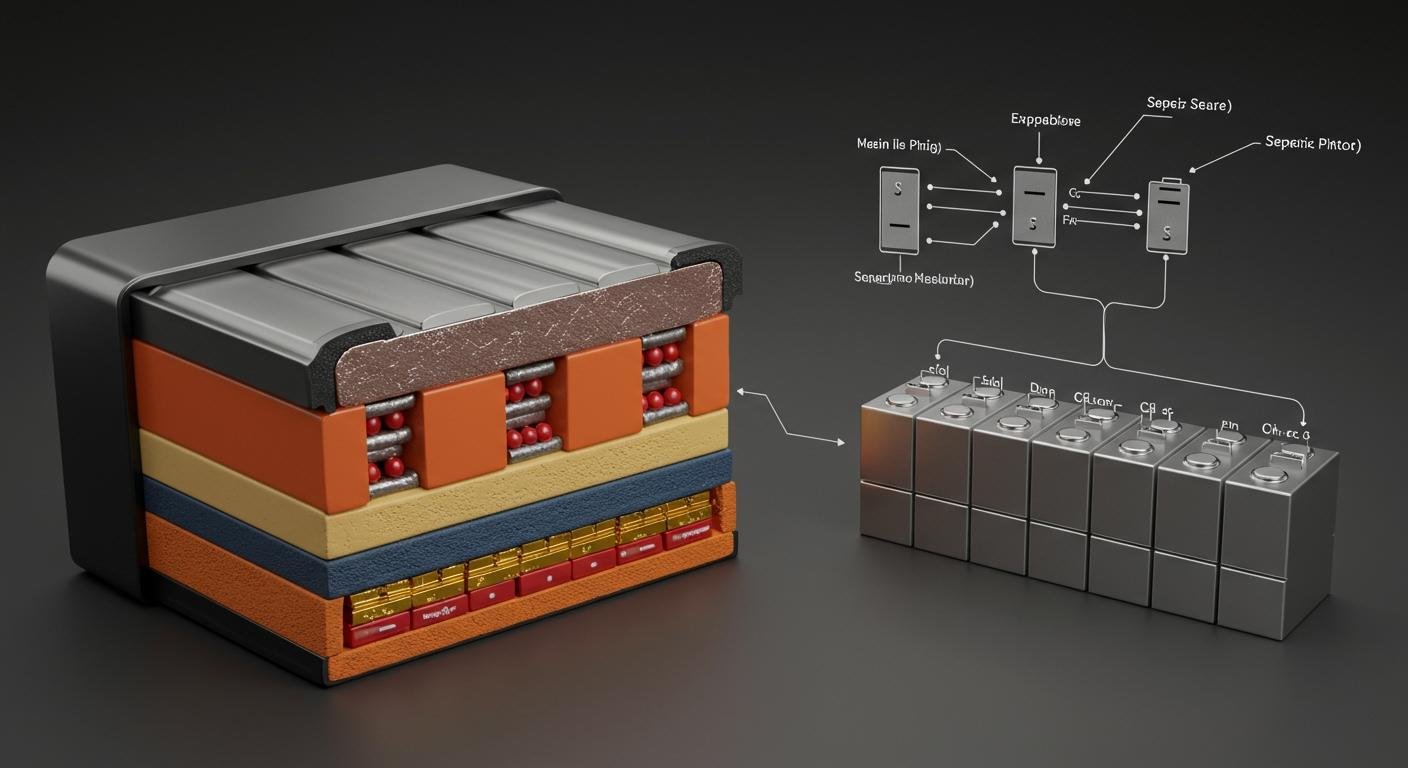
When you hear about a LiFePO4 battery series, it simply refers to the battery’s nominal voltage. Common series include 12V, 24V, and 48V options. Understanding the different series of LiFePO4 batteries is your first step toward choosing the right battery for your needs. The popularity of the lithium iron phosphate battery is growing fast. Market forecasts show strong, continued growth for this powerful LiFePO4 battery technology.
📈 LiFePO4 Market Growth Projections
Source Growth Rate (CAGR) Forecast Period :— :— :— Grand View Research 10.5% 2024 to 2030 WiseGuyReports 13.7% 2025 to 2035
What Is a LiFePO4 Battery Series?
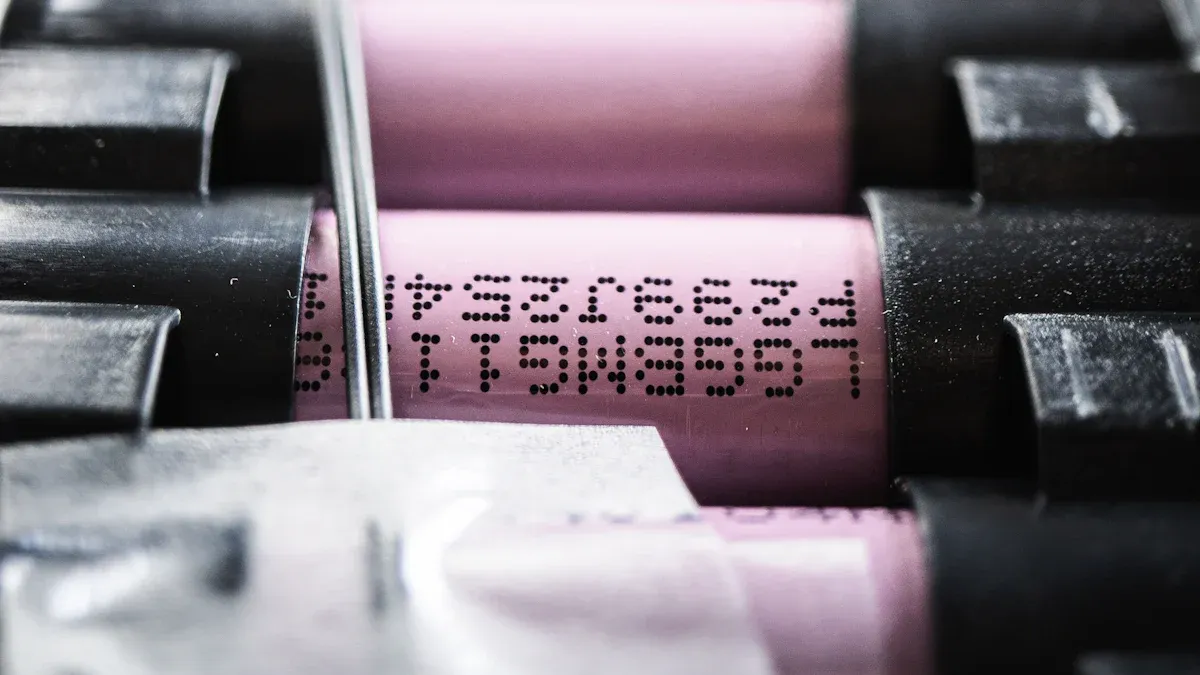
The LiFePO4 battery series you choose determines your system’s voltage. This choice is the foundation of your power system. Understanding the different series of LiFePO4 batteries helps you build an efficient and safe setup.
Defining Voltage vs. Capacity
You can think of voltage and capacity like water in a plumbing system.
- Spannung (V) is like water pressure. Higher voltage pushes energy with more force.
- Capacity (Ah) is like the size of the water tank. A larger capacity means your battery holds more energy.
While LiFePO4 technology offers a slightly lower energy density than other lithium chemistries, its cycle life is far superior. This makes the lithium iron phosphate battery an excellent long-term investment for energy storage.
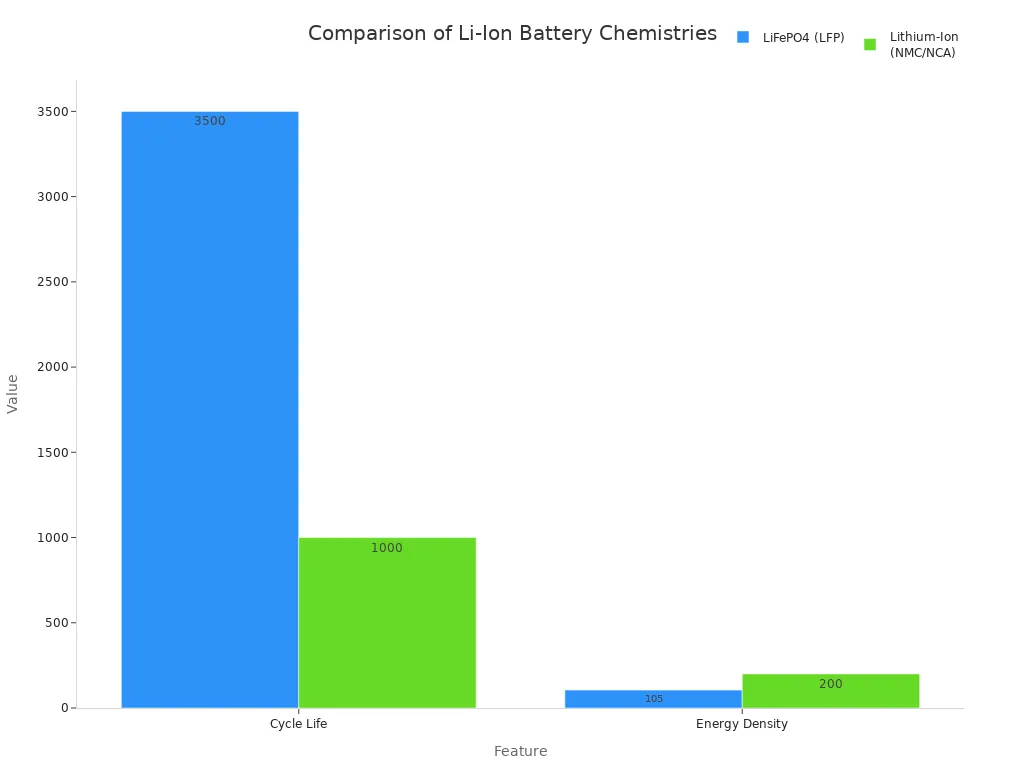
12V Series
The 12V LiFePO4 battery series is the most common and versatile. You will find this series in RVs, boats, and small off-grid solar setups. It is perfect for powering lights, fans, and refrigerators. Many people use a 12V LiFePO4 battery for backup power at home.
24V Series
A 24V series offers better efficiency for larger systems. It allows you to use smaller wires and handle more solar power with a single charge controller. This makes the 24V LiFePO4 series ideal for bigger off-grid cabins and powerful trolling motors.
36V Series
The 36V series is a specialist in the marine world. You will see this LiFePO4 battery series used almost exclusively for high-thrust trolling motors from brands like Garmin, Minn Kota, and Rhodan. This series provides the sustained power needed for long days on the water.
48V Series
The 48V series is the standard for modern residential solar energy storage systems and golf cart upgrades. This lithium iron phosphate system balances safety and performance perfectly. A 48V LiFePO4 battery is also a popular choice for an electric vehicle.
High-Voltage Systems
Systems over 48V are typically for large-scale applications. You find these powerful LiFePO4 battery series in commercial energy storage, industrial factoriesund telecommunication hubs. These high-voltage energy storage systems deliver massive power where it is needed most.
How to Select the Right LiFePO4 Battery
You now understand the different LiFePO4 battery series. The next step is to choose the right lithium LiFePO4 battery for your project. This process involves matching voltage, calculating capacity, and checking power ratings. Following these steps ensures you build a safe and efficient system.
Match System Voltage
Your first decision is to match the battery voltage to your system’s requirements. Your inverter, charge controller, and appliances are all designed for a specific voltage. Using the wrong series can cause serious problems.
A voltage mismatch creates severe electronic stress on your components. Higher voltage charging can cause structural damage inside the LiFePO4 battery itself. This leads to issues like:
- Overheating and melted windings
- Rapid wear or instant component failure
- Safety hazards from overstressed parts
⚠️ Warning: Voltage Mismatch Voids Warranties Manufacturers log voltage events in their electronics. If you use a 40V battery on a 20V tool, the company will know. They will deny your warranty claim for any damage that occurs. Always use the correct voltage series for your equipment.
Calculate Capacity Needs (Ah)
After you select a voltage, you must calculate your energy needs. This determines the capacity (Ah) your battery needs. You can calculate your daily energy consumption in a few simple steps.
- List Your Devices: Write down every electrical appliance you will power.
- Find Power Ratings: Note the power consumption (Watts) for each device.
- Estimate Daily Use: Determine how many hours you will use each appliance per day.
- Calculate Watt-hours (Wh): Multiply each device’s wattage by its daily hours of use.
- Sum the Totals: Add up the Watt-hours for all devices to get your total daily energy need.
Here is an example calculation for a small off-grid setup:
| Appliance | Wattage (W) | Hours Used/Day | Daily Watt-hours (Wh) |
|---|---|---|---|
| LED Light Bulb (x5) | 45W | 6 hours | 270 Wh |
| Refrigerator (Energy Star) | 100W | 8 hours | 800 Wh |
| Laptop | 60W | 4 hours | 240 Wh |
| Television (LED) | 80W | 3 hours | 240 Wh |
| Water Pump (1 HP) | 750W | 0.5 hours | 375 Wh |
| Phone Charger | 10W | 2 hours | 20 Wh |
| Total Daily Energy Consumption: | 1945 Wh |
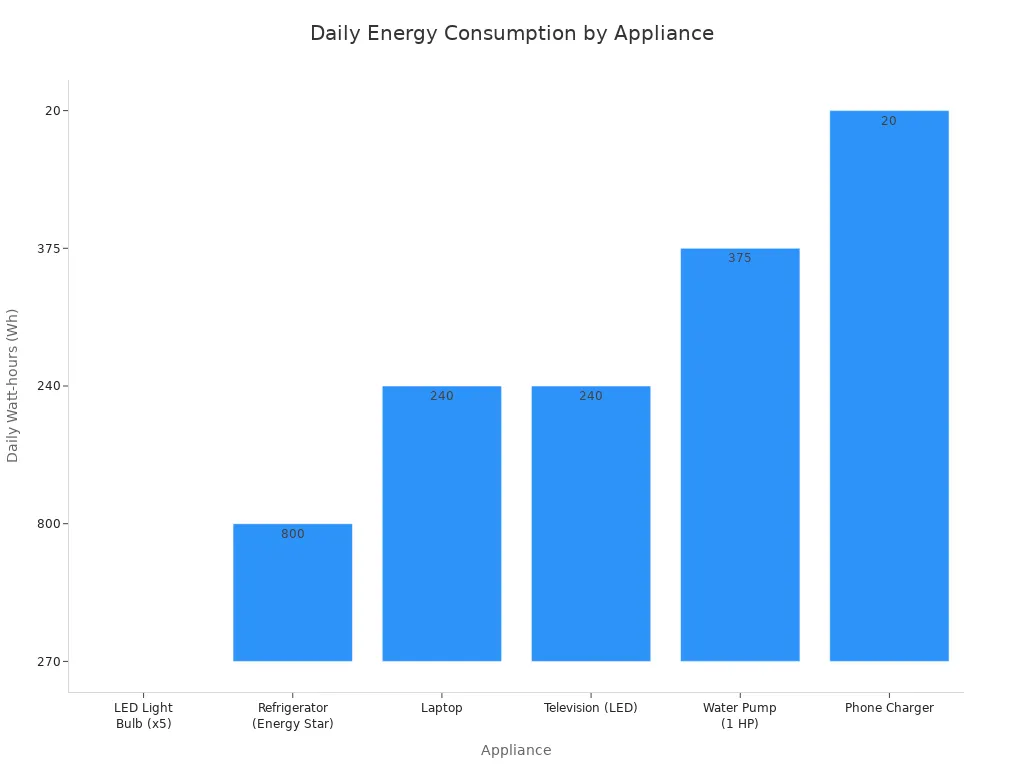
Once you have your total Watt-hours, you can convert it to Amp-hours (Ah) to find the right battery capacity. Use this simple formula:
Amp-hours (Ah) = Watt-hours (Wh) / Voltage (V)
For example, if you need 1945 Wh for a 12V system, your calculation is 1945 Wh / 12V = 162 Ah. You would need a battery with at least 162 Ah of capacity. Notice how a higher voltage series requires a lower Ah capacity for the same amount of energy.
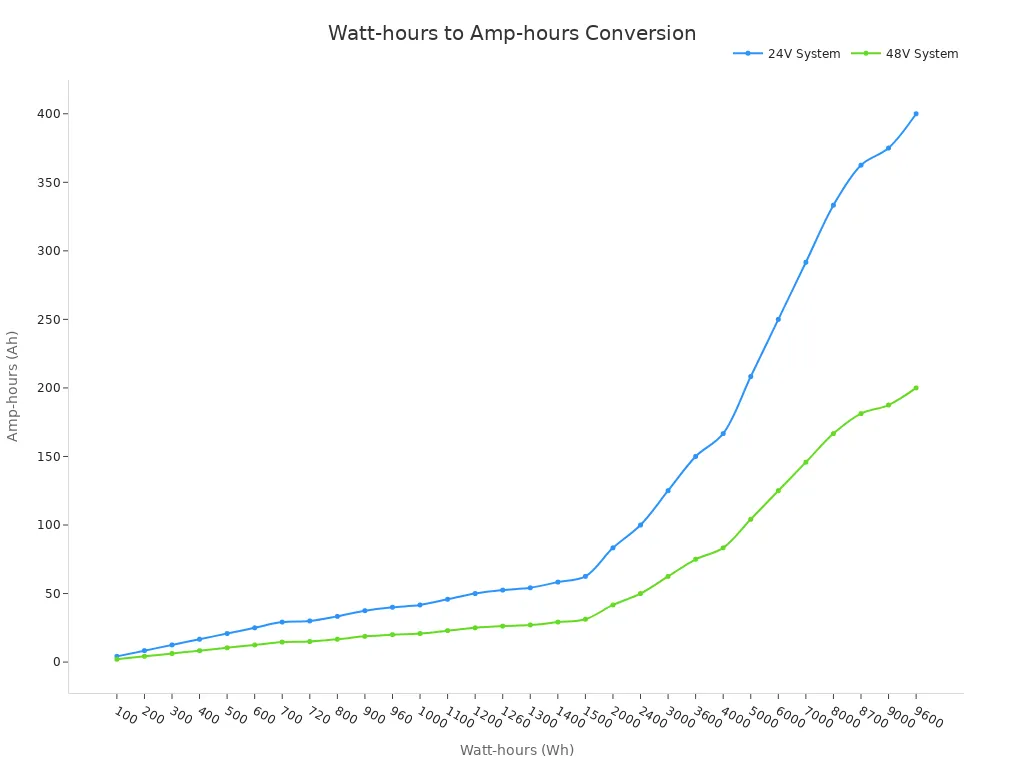
💡 Pro Tip: Add a Buffer for Longevity To maximize the lifespan of your LiFePO4 battery, avoid draining it completely. Experts recommend keeping the charge between 20% and 80%. This means you should only use about 60-80% of the battery’s total capacity. For a 162 Ah need, you should look for a battery around 200 Ah to create a healthy buffer. This is one of the key benefits of LiFePO4 lithium batteries, as this practice greatly extends cycle life.
Consider Power Draw and C-Rate
You must also ensure your battery can deliver power fast enough for your devices. This is where the C-rate becomes important. The C-rate measures how quickly a battery can be charged or discharged relative to its capacity.
- Low C-rate (e.g., 0.5C): These batteries are designed for slow, steady power output. They are perfect for energy storage applications like off-grid solar, where you discharge the battery over many hours. A 100Ah battery with a 0.5C rating can safely provide 50 amps.
- High C-rate (e.g., 2C or higher): These batteries deliver large bursts of power. They are ideal for high-demand applications like engine starters or power tools. A 100Ah battery with a 2C rating can provide 200 amps for a short period.
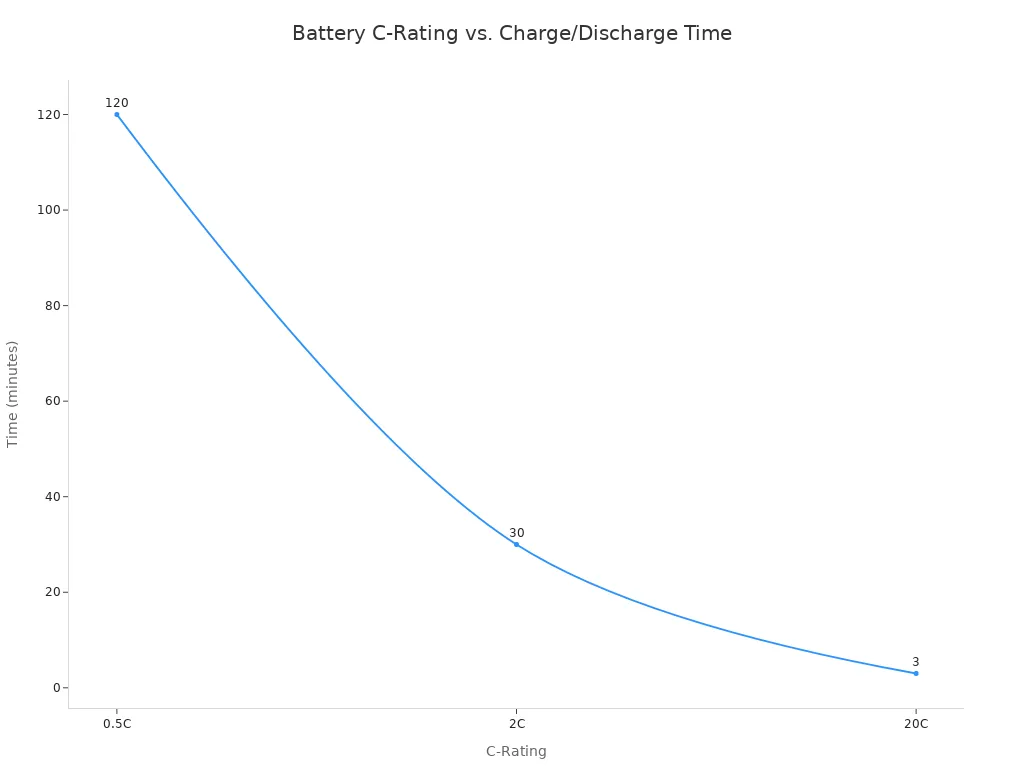
Some appliances have a high peak power draw when they start. An air conditioner is a great example. It might run at 1,500 watts but needs 3,000 watts for a few seconds to start its compressor. Your LiFePO4 battery and its BMS must be able to handle this peak load.
| Appliance | Continuous Power Draw (Watts) | Peak Power Draw (Watts) |
|---|---|---|
| Microwave | 1000-2000 | K.A. |
| Air Conditioner (7-10k BTU) | 1000-1500 (Running) | 2200-5000 (Starting) |
Check the continuous and peak discharge ratings of any LiFePO4 battery series you consider. This ensures your battery can safely power all your devices. The advanced LiFePO4 technology allows for a wide range of C-rates to suit different needs.
Evaluate the BMS
The Battery Management System (BMS) is the brain of your LiFePO4 battery. It is a small electronic circuit board inside the battery case. The BMS protects the battery cells, ensures safety, and maximizes lifespan. A high-quality BMS is non-negotiable for any LiFePO4 energy storage system.
A good BMS protects the battery from common issues. It constantly monitors the battery and will disconnect the power if it detects an unsafe condition. Look for a BMS that includes these essential protections:
- Over-Voltage Protection: Stops charging when the battery is full.
- Under-Voltage Protection: Disconnects the load before the battery is empty.
- Over-Current Protection: Prevents damage from drawing too much power at once.
- Short-Circuit Protection: Instantly cuts power if a short circuit occurs.
- High-Temperature Protection: Stops charging or discharging if the battery gets too hot.
The BMS specifications are just as important as the battery’s voltage and capacity. A powerful battery is useless without a capable BMS to manage it. Evaluating the BMS is a critical step to choose the right lithium LiFePO4 battery for your energy storage needs.
Battery Series in Action: Application Scenarios
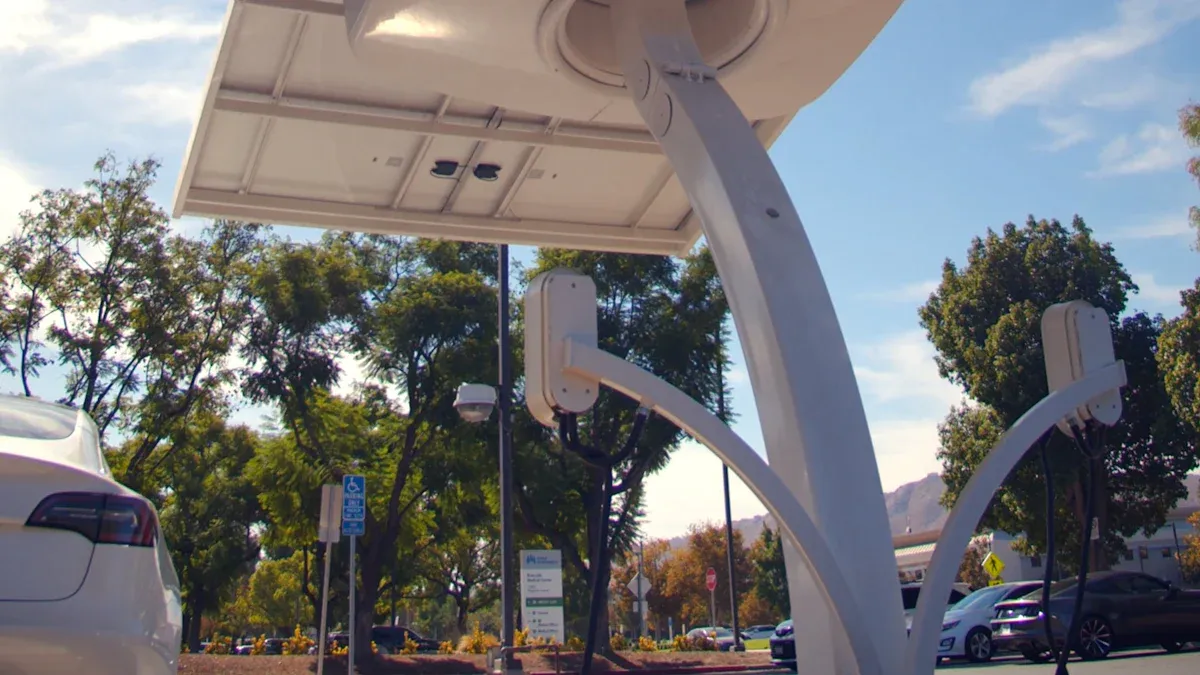
Theory is helpful, but seeing the LiFePO4 battery series in real-world situations makes the concepts clear. Let’s walk through three common projects to see how you would select the right battery.
Scenario: Camper Van Power
Your camper van is your home on wheels, and a 12V series is the perfect foundation for its power system. Most van appliances, like lights, fans, and water pumps, run natively on 12V DC power. To choose the right capacity, you must calculate your daily energy use. A fully equipped van often uses a significant amount of energy.
🚐 Van Life Energy Needs A typical camper van with a refrigerator, LED lights, and charging ports can consume between 8 and 20 kWh per day. A LiFePO4 battery provides the reliable energy storage you need.
For a 12V system, this translates to a large amp-hour requirement. Many full-time van lifers pair a 200-400Ah LiFePO4 battery with a 400-600W solar array. This setup ensures you can recharge your battery and live comfortably off-grid.
Scenario: Off-Grid Cabin Solar
For a larger, stationary setup like an off-grid cabin, you should consider a 24V or 48V series. These higher-voltage energy storage systems are much more efficient. The main reason is simple physics. For the same amount of power, doubling the voltage cuts the current in half.
This reduction in current is a huge advantage.
- You can use smaller, less expensive copper wires.
- You lose less energy as heat over long wire runs from your solar panels to your battery bank.
A 48V series is the standard for most residential-style off-grid homes. This LiFePO4 setup integrates seamlessly with powerful inverters and standard breaker panels, making it a practical choice.
Scenario: Golf Cart Upgrade
Upgrading your golf cart from old lead-acid to a 48V LiFePO4 series delivers an amazing performance boost. This is one of the key benefits of LiFePO4 lithium batteries. The first thing you will notice is better acceleration and hill-climbing power. A LiFePO4 battery is much lighter, reducing the overall weight of your electric vehicle.
Unlike lead-acid, a LiFePO4 battery provides consistent voltage until it is nearly empty. Your cart will maintain full speed and torque, even as the battery drains. Many users report a 20-30% increase in top speed just by switching to a 48V LiFePO4 battery. This upgrade transforms your golf cart’s performance and extends its range, showing the power of this technology in the growing energy storage market.
You now have the essential knowledge to choose the right lithium LiFePO4 battery. Selecting the correct LiFePO4 battery series is a simple process. First, match the voltage to your system. Second, calculate the capacity your battery needs. Third, ensure the battery BMS can handle your power demands. Following these steps helps you find the perfect LiFePO4 battery series. This choice ensures your LiFePO4 battery system is a smart, long-term investment.
Why Choose a LiFePO4 Battery Series? 💡 A LiFePO4 battery offers a much longer lifespan and a lower total cost of ownership compared to lead-acid options, making your selected battery series a superior value over time.
FAQ
Can you mix different LiFePO4 battery series?
You should not mix different battery series in one system. For example, connecting a 12V and a 24V battery will cause damage. Always use batteries with the same voltage, capacity, and age. This practice ensures both safety and reliable performance for your setup.
How long does a LiFePO4 battery last?
A LiFePO4 battery offers an exceptionally long lifespan. You can expect between 3,000 and 5,000 charge cycles. With proper care, your battery can easily last over 10 years. This durability makes it a smart, long-term investment for your energy needs.
Are LiFePO4 batteries safe to use?
Yes, LiFePO4 batteries are one of the safest battery technologies available. Their chemical structure is very stable and not prone to overheating.
🛡️ Built-in Protection The internal Battery Management System (BMS) adds another layer of safety. It protects against overcharging, short circuits, and high temperatures.
Can you use a lead-acid charger for a LiFePO4 battery?
You should use a charger specifically designed for LiFePO4 chemistry. A standard lead-acid charger may not charge the battery correctly and can reduce its lifespan over time. Using the proper charger protects your battery and ensures it performs at its best.

